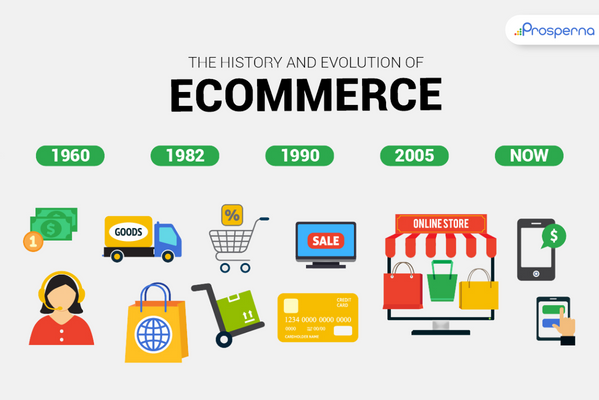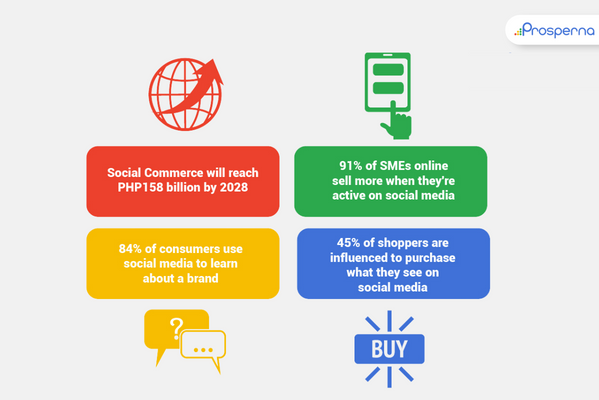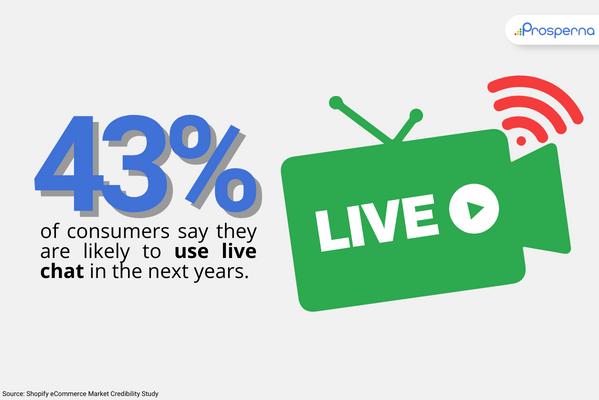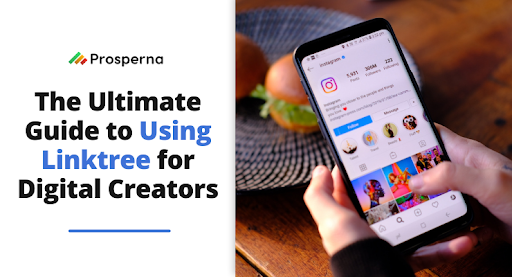Although the concept of selling products exclusively online is not new, a different type of online shopping is rapidly gaining popularity and altering how people find and buy products online.
It’s called social commerce, and it’s changing the way businesses interact with their customers.
Read on to find out what it’s all about, how it works, and how you can adjust your digital marketing strategies to jump into this trend.
Key Takeaways
- Social commerce is a subset of eCommerce where the buying and selling of products and services are done through social media platforms.
- It appeals to Millennials and Gen Zs and helps lower the obstacles and friction in the buying process.
- Connecting your social media account to an eCommerce website allows you to build credibility, have an even wider audience, and have more revenue.
A Brief History of Social Commerce

As far as eCommerce goes, traces of social commerce first appeared on Yahoo! back in 2005.
While the search engine wasn’t considered social media as we know it, they did start featuring the most popular products on the Internet through their “Shoposphere Pick Lists” as a marketing campaign.
Recently, social commerce has been making rounds in the business news as China produced another successful interactive eCommerce platform known as PinDuoDuo.
The company grew exponentially, with 751 million active users in the first quarter of 2022, despite being just a startup.
Since the numbers are big on data, Facebook and Instagram recreated this in the form of Shops, to join in the revolution.
What Is Social Commerce?

Social commerce is the process of making social media material shoppable and incorporating it into a customer’s buying process.
To put it simply, it’s the buying and selling of items and services on social media networks.
Going back to PinDuoDuo as an example, they have a direct-to-consumer business model where buyers and sellers get together on their social platform to make purchases.
This strategy encourages consumers to finish the entire purchasing process without leaving the app, expanding social media’s traditional role in the discovery process.
It includes all phases of a sales transaction, from product promotion to customer support.
In order to attract new customers and increase brand awareness, businesses employ unique content, offer expert advice and support, and promote comments and discussions on social media communities.
Facebook, Instagram, Pinterest, and TikTok are four of the most popular social media platforms that are also currently used as social commerce apps.
| The significance of social commerce is that customers can shop directly via the app or channel without having to be redirected anywhere else. |
Social Commerce vs. E-commerce
Contrary to popular belief, social commerce and eCommerce are different.
E-commerce is a broad term for buying and selling products and services online, usually on a website or branded app.
Typically, eCommerce platforms like Prosperna are used to create these websites.
On the other hand, social commerce is a subset of eCommerce where the entire buying process happens within the social media platform.
The buyer’s journey is often longer in eCommerce because it requires numerous steps as opposed to social commerce, where a transaction is completed in just three or four stages.
However, online sellers that do have an eCommerce website can benefit from building credibility and driving traffic to their online store.
Social Commerce vs. Social Selling
Social selling is another phrase that is frequently used interchangeably with social commerce. But they are also not one and the same.
Social selling is not the direct sale of products but rather the process of establishing your company’s brand and building a customer base to, later on, drive more sales.
Businesses create engaging social media posts to market their products.
In turn, potential customers will want to visit their online store or website to complete the purchase.
| Social selling campaigns are measured not by sales but by social interactions and engagements, such as likes, shares, and reposts. |
Benefits of Social Commerce for Your Small Business
To understand whether this is something worth paying attention to or not, we need to take a look at the benefits of social commerce for your small business and its potential impact on the market.
Here are some examples:
- Shopping becomes a social activity for consumers
- Reduce barriers and friction in the purchasing process
- More ways for businesses to make money online
- Collect direct feedback from customers on what works and what doesn’t
- Future-proof for the techie generation (Millennials and Gen-Zs)
- Target your audience using their social activity
If you already understand what this means for Filipinos who spend most of their time browsing on social media, think of the effects it will have on your small business once you leverage this system.
Now, this doesn’t mean that you should drop everything that you’re already doing online and just focus on social commerce, but it is something you should consider experimenting with to see if it works for your business and target customers.
Social Commerce Tips
There are a few things you can do after setting up your social media to make sure you maximize your revenue from this channel.
Here are some of the best ways to use social commerce and strategies you can implement right away to get started or hone your digital marketing plan:
- Optimize your content by using vertical images; videos that fall between 6-15 seconds; and keeping your content short, no more than 500 characters for the description.
- Provide social proof, such as statistics, results, feedback, and reviews. Customers want proof that your products and services are being purchased and used by others.
- Link your social media platforms to your eCommerce website. This allows you to have an even wider audience.
Prosperna’s All-In-One eCommerce software allows you to easily sync and share your online store with anyone across multiple social media platforms.
Social Commerce Trends To Watch Out For
You can come up with a solid social commerce strategy with the help of the strategies and tips mentioned above, but you shouldn’t stop there.
Add these social commerce trends into your digital marketing plan to expand your business.
1. Using Chatbots for Product Inquiries
Businesses now have a competitive advantage in costs and sales thanks to chatbots. They do not require a representative to respond to client questions.

Depending on the choices made by the clients, it can offer advice, share product images, and, if necessary, request human support.
2. Collaborating With Micro-Influencers
Working with influencers to expand your brand’s reach is always a solid strategy. They have a greater audience engagement percentage, and people—most of the time—listen to what they have to say.

Select an influencer that has a dedicated following and specializes in your niche.
3. Shoppable Feed and Content
One of the most well-liked social commerce trends is Facebook and Instagram shops. It is extensively employed by businesses to transform their social media feeds into shoppable stores.

Another trend is shoppable live streams, just like the ones you see on TikTok and Shopee, where you display multiple product links and your customers can make purchases while watching.
Social Commerce FAQs
Is social commerce profitable?
When social commerce is properly implemented, it can increase customer happiness, raise brand awareness, and boost revenues. Plus, it can be particularly successful if your business is aimed at younger audiences like Millennials and Gen Z, who feel at ease making purchases on social media.
Is social commerce easy?
Because social commerce often only requires three steps—viewing, clicking, and purchasing—it can greatly simplify the buying process. In-app credit can then be used to make payments.
Conclusion
If you must know, things will only go up for social commerce from here, according to the trends.
Remember the time when social media was just text-based, then moved to include images, and then games?
Well, shopping is next on the list!
The time to be flexible and embrace change is now. The sooner you start experimenting with social commerce, the quicker you can scale your online business.
Prosperna, Your Partner to eCommerce Success
Prosperna is an all-in-one eCommerce platform for Philippine businesses. We are on a mission to empower 100,000 Philippine MSMEs with simple and affordable eCommerce software.
In fact, we are super passionate about helping Philippine MSMEs we’re giving you a free account forever!
Want to leverage the social commerce trend and start selling online? Create your free-forever Prosperna account now.




